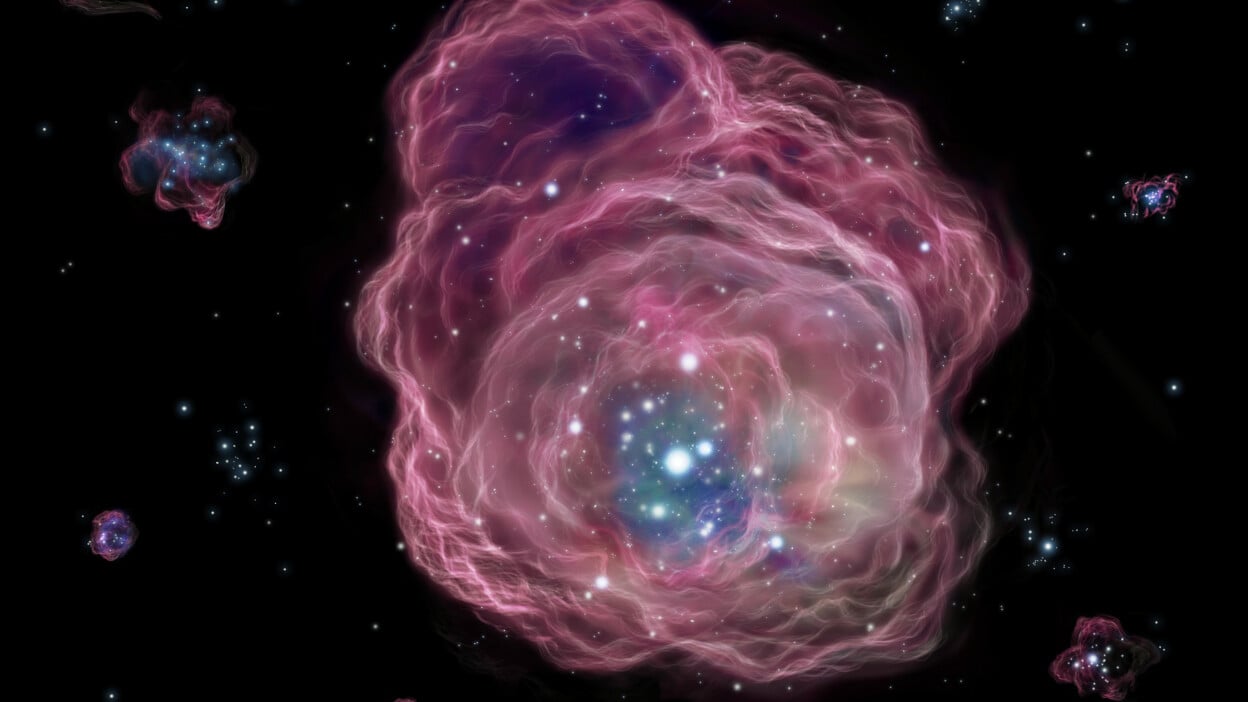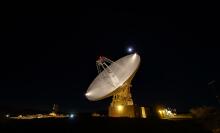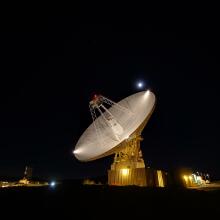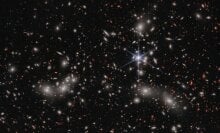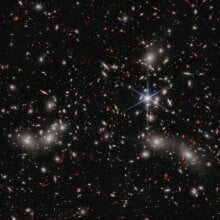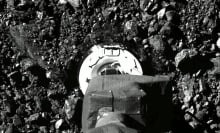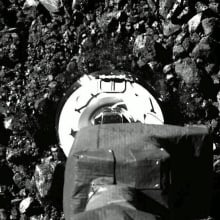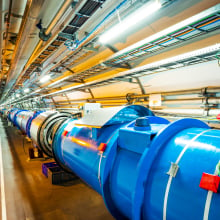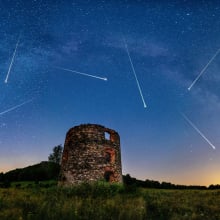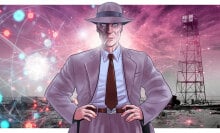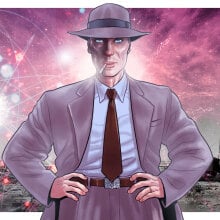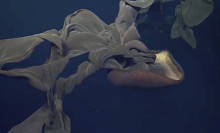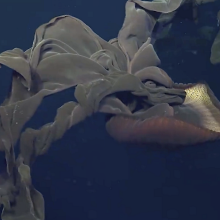If you've ever thought about the first stars after the Big Bang, you might have racked your brain just trying to fathom what they were made of.
Given that most of the metals of the universe are thought to have come from exploded dead stars, scientists have rationalized that the firstborn must have been composed almost entirely of hydrogen and helium, the primitive material that emerged out of the Big Bang.
Nice idea. Thing is, no one has seen one of these pure-bred stars yet.
But a team using the James Webb Space Telescope, a collaboration of NASA and the European and Canadian space agencies, may be onto something. While recently studying galaxy GN-z11, which existed when the 13.8 billion-year-old universe was only about 430 million years old, they found a clump of helium in the halo surrounding it. The new research, accepted for publication by the science journal Astronomy & Astrophysics, could lead to one of the most important discoveries of modern astrophysics.
"The fact that we don't see anything else beyond helium suggests that this clump must be fairly pristine," said principal investigator Roberto Maiolino of the University of Cambridge in the United Kingdom, in a statement.
Tweet may have been deleted
By theory, scientists have expected to find clumps like this around massive galaxies from early eras. The thinking is that these pristine pockets of gas could collapse and form so-called Population III star clusters, Maiolino said.
The confusingly named Population III stars are the theorized stars that should have been formed in the early universe before metals — an astronomical term for all elements heavier than helium — existed. The stars are thought to be very massive, luminous, and hot.

The reason why they're called "Population III" is because back in the 1940s, stars were divided into two primary categories: those that were rich in metals and those that were poor in metals, according to Swinburne University of Technology in Australia. But even the latter have far more metal content than would have been possible from the primitive gas leftover from the Big Bang.
Astronomers eventually began thinking in terms of a yet-to-be-seen third population of stars, made of the pure Big Bang material that had not been processed by previous generations of stars.
The cores of stars are considered element factories: They make carbon, for instance, the same chemical on which humans and much of life on Earth are based. Then, through supernova explosions, they spread heavy elements, like calcium found in bones and iron in blood, across interstellar space. This dispersal seeds new generations of stars and planets, but scientists admit they still have much to learn about the early stages of the process.
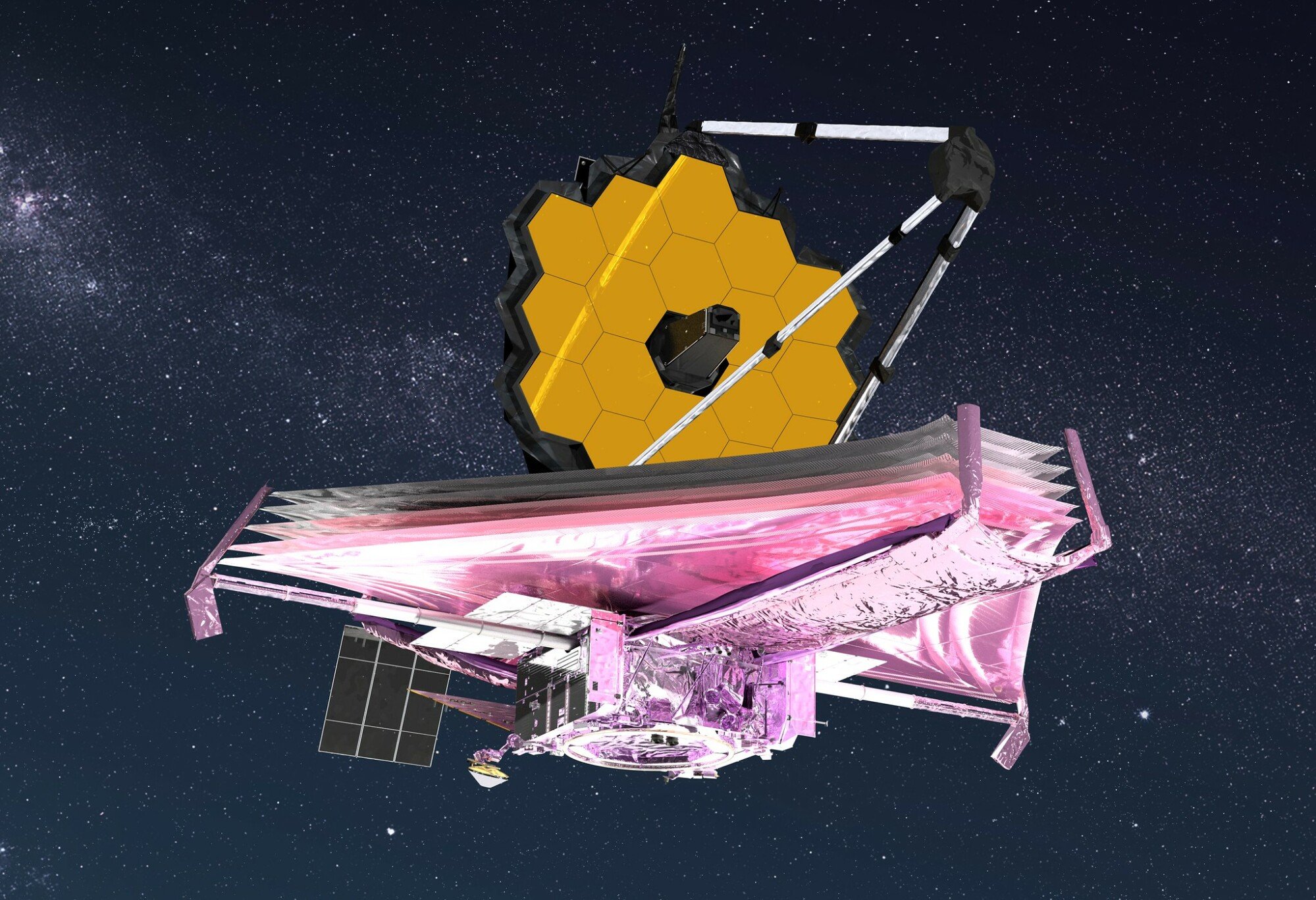
In astronomy, looking farther translates into observing the past because light and other forms of radiation take longer to reach us. Webb was built to study an extremely early period of the cosmos, detecting invisible light at infrared wavelengths. In short, a lot of dust and gas in space obscures the view to extremely distant and inherently dim light sources, but infrared waves can penetrate through the clouds.
"The initial goal for this mission was to see the first stars and galaxies," said Eric Smith, Webb's program scientist, in 2022, "not the first light of the universe but to watch the universe turn the lights on for the first time."
Topics NASA
